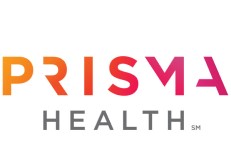| A B C D E F G H I J K L M N O P Q R S T U V W X Y Z # |
Upper Respiratory Culture (LABCORP)
Test Code99901000230
Alias/See Also
LAB2165: Upper Respiratory Culture | LABCORP EAP: 008342
CPT Codes
87070x1
Preferred Specimen
LABCORP LAB: STERILE CONTAINER (Room Temperature) Min Vol: 1
Other Acceptable Specimens
LABCORP LAB: STERILE SWAB: (Room Temperature) Min Vol: 1
LABCORP LAB: BLUE SWAB: (Room Temperature) Min Vol: 1
LABCORP LAB: BLUE SWAB: (Room Temperature) Min Vol: 1
Transport Temperature
Test Includes: Culture for fungi. Isolation and identification (additional charges/CPT code[s] may apply) if culture results warrant. CPT coding for microbiology and virology procedures often cannot be determined before the culture is performed. Specimen: Biopsy, blood, body fluid, aspirates, bronchoalveolar lavage (BAL), swab of conjunctiva, skin, nails, hair, sputum, stool, throat, tissue, urine, or vaginal Volume: 2 mL or 1 cm³ tissue, 10 mL blood, whole nails, 50 mL body fluid (5 mL CSF), 5 mL aspirates or sputum; skin scrapings may be submitted on Mycosel® medium (not supplied by LabCorp) Container: Sterile container for fluid or tissue or green-top (sodium heparin) tube, blood culture bottle Collection: Biopsy: Surgical specimen in sterile container. A small amount of sterile nonbacteriostatic water should be added to prevent drying. Body fluid, aspirates: Aspirated material in sterile container. Eye: For keratitis, scrapings with a Kimura spatula directly inoculated using “C” streaks are best. Skin: Cleanse the area with 70% alcohol and collect a portion from the active border of the lesion. Nails: For all types of onychomycosis, clean the nail area well with 70% alcohol, then, depending on type of nail disease, collect the following: • Distal subungual: Clip the abnormal nail as close to the proximal edge as possible. Scrape the nail bed and underside of nail plate with a curet. Discard the outermost debris, which likely contains contaminants. Nail clippings are less desirable for culture. • Proximal subungual: Pare down the normal surface of nail plate in the area of the lunula. Collect white material from the deeper portion of plate. • White superficial: Scrape the white spots, discarding the outermost surface, which likely contains contaminants. Collect the white areas directly underneath. • Candida infection: Collect material closest to the proximal and lateral nail edges. Hair: Epilate 10 to 12 hairs and place them in a sterile container. Stool: Random sample in sterile container. Swabs: Throat, nose, nasopharynx, and ear swabs are acceptable; material from the ear is better than a swab. Urine: Clean catch midstream sample in sterile container. Wound: Aspirate of purulent material or fluid, scraping of lesion border, or swab (least preferred) in sterile container. Swabs cannot be split for other tests. Avoid contamination of the specimen with commensal organisms as much as possible. Specify the source of the specimen and include any pertinent clinical information. Cultures are incubated one to four weeks (depending on source) before a final negative report is issued. Storage Instructions: Refrigerate nonsterile respiratory specimens; all others should be maintained at room temperature.
Report Available
LABCORP LAB
STAT: 60480 min
Routine: 60480 min
Extended TAT: 60480 min
Timed: 60480 min
Life or Death: 60480 min
STAT: 60480 min
Routine: 60480 min
Extended TAT: 60480 min
Timed: 60480 min
Life or Death: 60480 min
Last Updated: March 6, 2023

